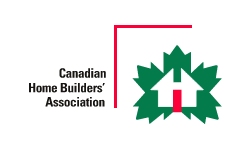With Canadians spending more than 90% of their time indoors, much of it at home, the “healthiness” of their home is a serious issue. Poor indoor air can have a detrimental impact on people’s well-being, from a general sense of feeling tired or “under the weather” to contributing to, or even triggering, allergies and asthma.
A home’s air is affected by many things: off-gassing from building materials, finishes and furniture; excessive moisture leading to mold growth; improper ventilation, and incomplete combustion in heating systems. Our daily activities also have a big impact-moisture from cooking, bathing and laundering; off-gassing from household cleaners; hair, dander and litter dust from pets and even emissions from equipment in a home office.
Today’s new homes are built to give you the best possible indoor environment—a comfortable, enjoyable home with clean fresh air, a comfortable moisture level, and no molds or lingering odours.
Construction and design
Good indoor air quality begins with solid construction that prevents air leakage and moisture penetration. Eliminating dampness and cold spots not only increases comfort, but also prevents mold growth. Exterior walls are well insulated with air barriers, vapour retarders and careful caulking. Energy-efficient windows help to prevent condensation. Open and spacious layouts promote good air movement throughout the home.
Ventilation
Mechanical ventilation is built into every new home, using exhaust fans to get rid of stale or excess moist air generated in the course of everyday living. Many new homes come with a heat recovery ventilator (HRV), which is a whole-house system that continuously brings in fresh air from the outside to all living areas of your home and exhausts the stale air. To make sure the system is not simply bringing in problems from the outside, the incoming air is filtered. It is also pre-heated by the outgoing air to save energy—this is the “heat recovery” part of the system.
Heating and cooling systems
In a brand new home, systems are selected and installed to safeguard homeowner comfort and the freshness of the indoor air. Energy-efficient heating and cooling systems operate cleanly and safely, drawing combustion air directly from the outside and venting exhaust gasses separately to avoid any risk of noxious fumes inside the home.
Building materials
By choosing the right building materials, builders can reduce the amount of pollutants or contaminants introduced into the home during construction. These include non-solvent-based glues and grouts, water-based paints, formaldehyde-free cabinetry and pre-finished hardwood flooring.
Finishing products
Many products are also chosen for their long-term effect on the indoor air. For instance, ceramic and other hard-surface flooring doesn’t trap dust and mites. Cabinets, countertops and sinks are easy to clean with mild, non-toxic cleaning agents.
When you begin with the right home, it is easy to maintain a healthy indoor living environment. For additional information, check Canada Mortgage and Housing Corporation’s Healthy Housing™ initiative.


A thought-provoking and related article is:
https://www.smartplanet.com/business/blog/intelligent-energy/could-a-green-home-make-you-sick/4218/
You have to think of a house as a system and proper HVAC (Heating, Ventilation, and Cooling) planning and maintenance is essential to the health and comfort of your living space.